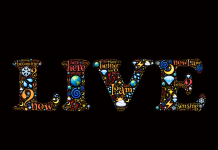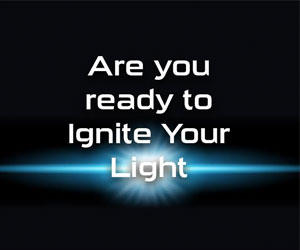What is Remote Viewing?
Remote Viewing is a psychic skill originally developed and utilized as an operational intelligence gathering tool for the United States Military and Intelligence services for over 23 years from 1972 – 1995. A January 1979 SECRET progress report from SRI (Stanford Research Institute) to the D.I.A describes Remote Viewing as:
“Remote Viewing (RV) is the acquisition and description, by mental means, of information blocked from ordinary perception by distance or shielding, and generally believed to be secure against such access.”
– SRI quarterly progress report for the DIA – Jan 10, 1979 – H.E. Puthoff, Ingo. Swann, Gary. Langford
Remote viewing is a mental, psychic or intuitive ability whereby a person (known as a remote viewer) can describe subtle impressions of, sketch, and model a target that is ‘remote’ from them and not available through their normal senses. Remote viewing is an intuitive ability related to being psychic, ESP or PSI
what Remote Remote viewing is a mental ability whereby a person (a remote viewer) can describe impressions of, sketch, and model a target that is ‘remote’ from them and not available through their normal senses. Remote viewing is an intuitive ability related to being psychic, ESP or PSI.
What Remote Viewing is NOT!
Remote viewing is NOT used to give “psychic readings,” “tell fortunes” or other sorts of popular classical psychic activities of this nature, but is rather a means of doing serious scientific research and for performing operational tasks in criminal investigations, government intelligence work, commercial applications and alike.
What started as a Top Secret $20M & 23year, U.S. military intelligence program more commonly known under its umbrella name of The Star Gate Program, to combat the cold war Russian psychic spies, has now grown into a worldwide civilian Remote Viewing community with the original Military/DIA/CIA remote viewers now teaching this art and their students expanding out in the world and setting-up their own private remote viewing companies and using this skill in many new and exciting ways.
Remote Viewing Protocols
The protocols are simple, clear rules that define what and if remote Viewing has occurred – nothing more.
Remote viewing is?
Anything psychic, any kind of intuitive impression be it clairvoyant, from tools like tarot cards, even channelled information, but more often than not its handwritten impressions, sketches and words on sheets of paper. BUT and yes there is a BUT to this.
The act of Remote Viewing is defined by how it’s produced. SRI (Stanford Research Institute) was required to create a set of rule or protocols to both define what remote viewing was and to also make it scientifically testable.
These protocols that define Remote Viewing are:
- Planned and Aimed. The psychic session must be planned and done on purpose. If you get a “spontaneous insight” or have a dream, that is not Remote Viewing. RV is when you intend to collect information about a specific target.
- Double-Blind. In most experiments, if the person giving the answers does not know the question, it would be called “blind” or “single-blind”. Remote Viewing is required to be “double-blind”. That means there are two (double) layers of “blinding”. It means the psychic cannot know the target, AND, nobody else who is present with the psychic during the session (even by remote means such as webcam or phone) can know the target either. This is because even pheremones, voice-frequencies, and many other “invisible” physiological senses can transfer information below the conscious level. (See Ingo Swann’s article ‘Your 17 Senses.‘)
- Feedback. Although you can be psychic about anything (the future, for example), in order to “validate” the data IS psychic and not just a wild guess, it has to be at least partly correct. In order to know what is correct, we need the real info to ‘compare to’ the session data. We call that info “feedback.”
Joe McMonegale says:
“Remote viewing is the ability to produce information that is correct about a place, event, person, object or concept which is located somewhere else in time and space, and which is completely blind to the remote viewer and others taking part in the process of collecting the information.
Two other requirements are:
- All persons present during a remote viewing should essentially be blind to the target.
- There should be some form or means of validating the material after the remote viewing has been accomplished.
In other words there should e feedback of some kind.
These requirements certainly set remote viewing apart from other forms or paranormal information collection, and there is a reason for this. Currently about 60 people, and the years of work, sweat, thought and a considerable amount of money, establishing the veracity of remote viewing through very extensive study. During this time, these peoples were very clear in defining the ground rules and protocols that were necessary in order to call it remote viewing. They did not do this just to separate remote viewing form other forms of the paranormal. They did it so that remote viewing would NOT be viewed like any other form of paranormal. They did it so that their new research techniques could bring some validity and credibility to the study of paranormal functioning…
Those who throw something together and call it remote viewing do a disservice to these people, these labs and dilute the very value and significance that these studies have brought to the paranormal field.So regardless how you might be trained, when you agree applying remote viewing, the target should be blind to whomever in the room”.
Remote Viewing Methods
Remote viewing has changed over the years since it became public in 1995. We now have two main routes or channels within Remote Viewing regarding methods, a free form approach and a rigid 6 stage process approach (CRV and its many derivatives).
Free-form Remote Viewing
Long before Ingo Swann dissected his own internal psychic process and recreated it as the six stage CRV process, many psychics used a natural/flowing form of remote viewing. This is the method favoured by Joe McMoneagle and the labs of SAIC (1986-1995). A more natural approach that doesn’t use a rigid staged process or discipline but just allows a natural flow of intuition which generally flows in the form of symbolic imagery and data. Early SRI experiments from Pat Price, Hella Hammid, Joe McMonegale, Ingo Swann and others were all done in a free form manner.
Extended remote viewing (ERV)
In this method, usually the psychic reclines or lies down comfortably in a darkened room, and another individual (an ‘interviewer’ or ‘monitor’) asks them questions and records the data they verbally provide, or they use a tape recorder. Prior to finishing their session they generally attempt to sketch their impressions. This was one of the first methods used by SRI and the military remote viewing program and is still favored by some.
Controlled Remote Viewing (CRV)
 During experimentation at SRI from 1972 – 1985, Ingo Swann a SRI sub contractor, began constructing a set of psychic methods which he felt addressed the important aspects of psychic work. The methods centre around an artistic process – writing or sketching data, using strict protocols whilst sitting at a table in a full alert state. The idea behind the method was to create a technology that made (RV) Remote Viewing, teachable to others but to also decrease the ‘noise’ within the RV process from an initial 20% signal – 80% noise. Reports from SRI (1984/85) indicate that the new process managed to reverse the signal to noise problem to 80% signal and 20% noise. This method was called CRV (Controlled remote Viewing) and eventually developed into a set of six stages, each stage building on the previous, opening a wider channel and picture of the target with each stage. The CRV process was paid for and sold into the U.S. Military as their primary Remote Viewing technique.
During experimentation at SRI from 1972 – 1985, Ingo Swann a SRI sub contractor, began constructing a set of psychic methods which he felt addressed the important aspects of psychic work. The methods centre around an artistic process – writing or sketching data, using strict protocols whilst sitting at a table in a full alert state. The idea behind the method was to create a technology that made (RV) Remote Viewing, teachable to others but to also decrease the ‘noise’ within the RV process from an initial 20% signal – 80% noise. Reports from SRI (1984/85) indicate that the new process managed to reverse the signal to noise problem to 80% signal and 20% noise. This method was called CRV (Controlled remote Viewing) and eventually developed into a set of six stages, each stage building on the previous, opening a wider channel and picture of the target with each stage. The CRV process was paid for and sold into the U.S. Military as their primary Remote Viewing technique.
There are currently a number of people teaching a number of alternative versions of the CRV method.
CRV changed over the years since Remote viewing became public in 1995 many different forms of the original CRV methods have appeared and mutated generally with the help of the internet and the need for individuals to have a different product to sell. Some of these variants we now see today are: TRV, Learn RV, SRV, TDS, and others. There are generally individuals from the military and civilians who have some experience with remote viewing methodologies, such as David Morehouse, Ed Dames, and Dr Courtney Brown who basically teach their own mutated/changed versions of Ingo’s CRV.
Within CRV itself there are variations – and ex Military remote viewers Lyn Buchanan, Paul H Smith and David Morehouse – all teach differing versions of the CRV methodology.
This info is credited to Daz Smith @ remoteviewed.com










